Sealing pastel artwork on paper is a vital step in preserving its delicate beauty and ensuring its longevity. Pastels, renowned for their rich pigments, can be susceptible to smudging and fading over time.
Proper sealing techniques not only shield the artwork from environmental factors like dust and light but also offer a stable foundation for additional layers or adjustments.
From fixative sprays to gel mediums and varnishes, various methods cater to different artistic preferences.
This guide outlines the essential steps and alternative techniques to master the art of sealing pastels on paper, allowing artists to confidently present their creations for generations to admire.

Brief Idea About Seal Pastels
Sealing pastels refers to the process of applying a protective layer over a pastel artwork to prevent smudging, preserve colors, and safeguard against environmental factors.
This crucial step ensures the longevity and integrity of the delicate pastel pigments on paper or other surfaces.
Fixative sprays are the most common method, available in workable and final variants. Workable fixatives allow for further pastel application, while final fixatives offer a more permanent seal.
Additionally, artists may use alternative methods like gel medium, retouch varnish, or framing with glass or acrylic.
Each method provides a different finish and level of protection. Sealing pastels is essential for preserving the vibrancy and texture of the artwork, allowing it to be enjoyed for years to come.
How to Seal Pastel on Paper?
Sealing pastels on paper is important to protect the delicate pastel pigments from smudging or being easily damaged.
Here’s a step-by-step guide on how to seal pastels on paper:
Materials Needed:
- Fixative spray
- Pastel paper or surface with your pastel artwork
- Well-ventilated area or outdoor space
- Mask and gloves
Steps:
Choose the Right Fixative
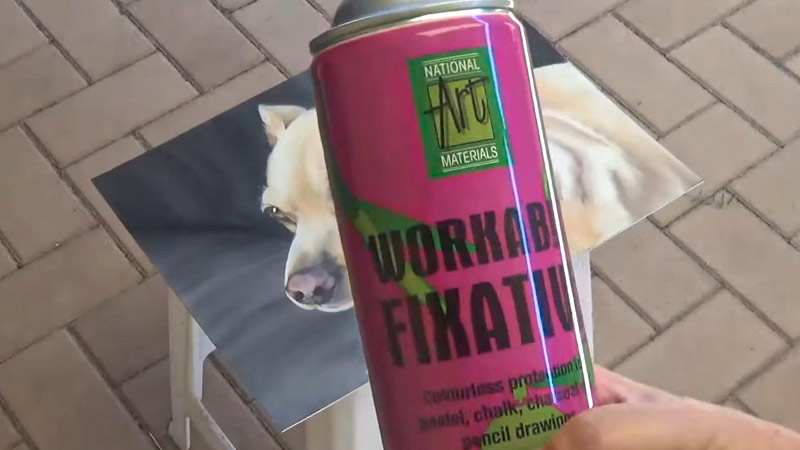
Workable fixatives are typically used during the early stages of your artwork to set the initial layers without making the surface too fixed. Final fixatives are for use once your artwork is complete to provide a more durable seal.
Prepare Your Workspace

Ensure your workspace is clean and clutter-free. Lay down newspapers, a drop cloth, or plastic sheets to protect your work surface from overspray and fixative residue.
Protect Your Artwork
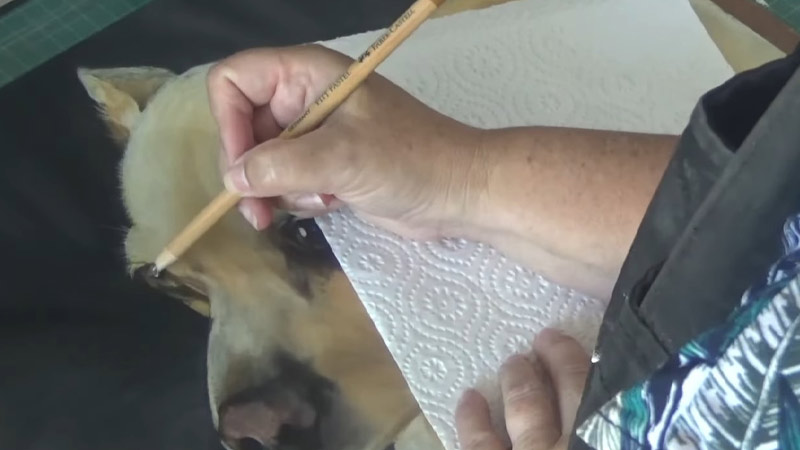
If your artwork is in a sketchbook or on a pad, consider placing a sheet of scrap paper behind the page you’re working on. This prevents any potential overspray from affecting other pages or artwork.
Wear Safety Gear
Put on a mask that offers protection against aerosol particles, and wear disposable gloves to prevent contact with your skin.
Test on a Scrap Piece
If you’re using a new fixative or are unsure about its effect on your pastels, conduct a test on a scrap piece of paper with some pastel marks. This helps you assess whether the fixative alters colors or creates unwanted effects.
Apply the Fixative
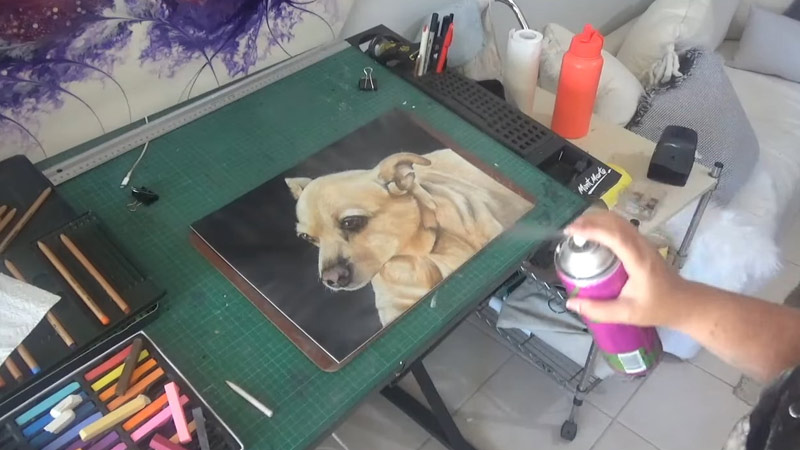
Hold the fixative spray can at a distance of at least 12 inches (30 cm) from your artwork. Begin spraying from one side and move the can smoothly and evenly across the entire surface. Apply in thin, even coats to avoid oversaturation or dripping.
Let it Dry
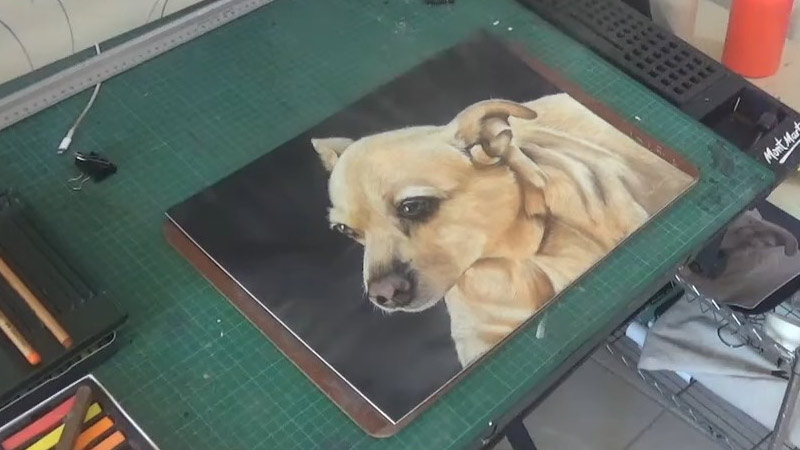
Allow the fixative to dry thoroughly. The drying time may vary depending on the type of fixative and environmental conditions. Be patient and avoid touching the artwork during this period.
Repeat if Necessary
If you feel that your pastel artwork isn’t adequately sealed after the first coat, you can apply additional coats following the same procedure. However, exercise caution not to overapply and potentially alter the artwork.
Inspect Your Artwork
Once the fixative is completely dry, carefully inspect your artwork. Ensure it retains its original colors and texture while being protected from smudging and damage.
Store Your Artwork
After sealing, you can frame your pastel artwork to protect it further from dust and potential damage. Alternatively, store it in a portfolio or a safe location.
Alternative Methods for Sealing Pastel on Paper
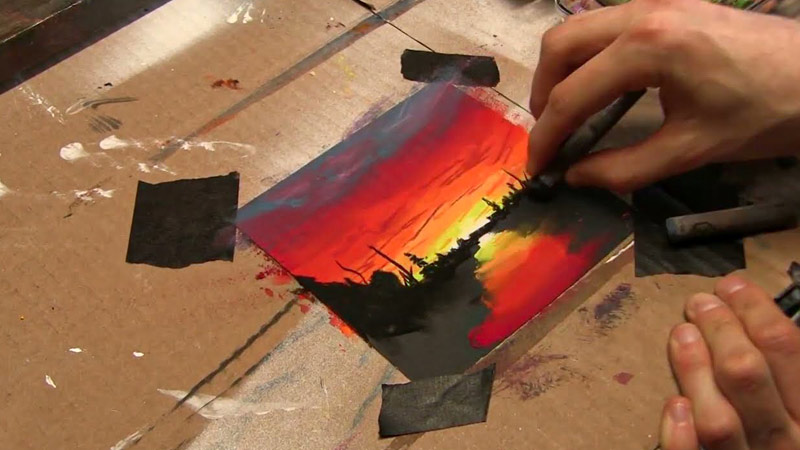
Aside from fixative sprays, there are a few alternative methods for sealing pastel on paper. These methods can offer different textures or finishes to your artwork.
Here are a few alternatives and their usage:
Matte Gel Medium
Matte gel medium is a thick, paste-like substance that can be brushed or spread onto your pastel artwork. It dries clear with a matte finish, providing a protective layer.
Use a clean brush to apply a thin, even layer over your pastel artwork. Allow it to dry completely. You can apply multiple coats if needed.
Retouch Varnish
Retouch varnish is typically used for oil paintings, but it can also be used to seal pastels. It provides a protective layer with a glossy finish.
Apply a thin coat of retouch varnish using a clean brush. Allow it to dry completely. Keep in mind that retouch varnish can have a strong odor, so ensure proper ventilation.
Framing with Glass
Framing your pastel artwork with glass or acrylic provides physical protection from dust, moisture, and accidental damage.
Place your pastel artwork inside a frame with a glass or acrylic sheet. Ensure that the glass/acrylic doesn’t touch the artwork directly to prevent smudging.
Fixative Pencil
A fixative pencil is a solid form of fixative that can be applied directly onto specific areas of your artwork for precision.
Use the fixative pencil to apply fixative to areas that need extra protection, such as fine details or delicate layers.
Spray Varnish
Spray varnish is similar to fixative spray but provides a different finish. It can give a glossy, satin, or matte appearance, depending on the type chosen.
Follow similar steps as using a fixative spray, but select the desired type of spray varnish for the finish you want.
Liquin
Liquin is a medium commonly used with oil paints, but it can also be used with oil pastels to provide a protective layer and enhance the colors.
Apply a thin layer of Liquin using a clean brush. Allow it to dry completely. Note that this method is specifically for oil pastels.
Purposes of Sealing Pastels on Paper
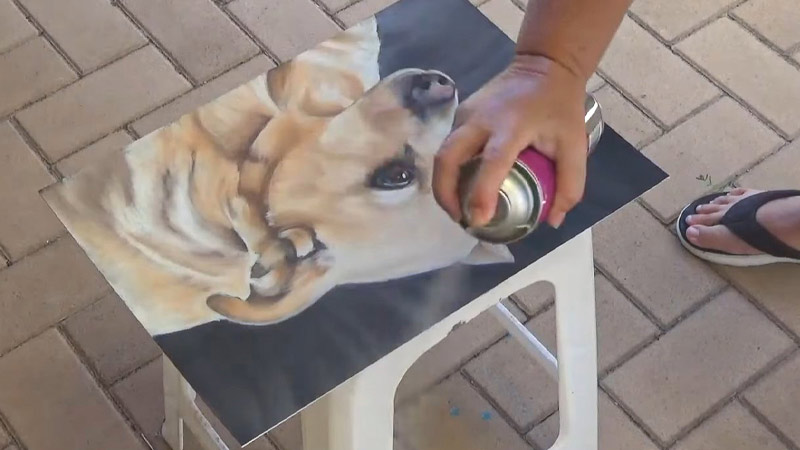
Sealing pastels on paper serves a crucial role in preserving and protecting the delicate medium of soft pastels.
Here are some essential purposes and benefits of sealing pastels on paper:
Prevention of Smudging
Pastels have a powdery texture, making them prone to smudging. Sealing with a fixative creates a barrier that helps prevent the pigments from rubbing off or smudging during handling or display.
Protection Against Dust
Over time, dust and dirt particles in the environment can settle on the surface of a pastel artwork. Sealing provides a protective layer that makes it easier to clean the artwork without damaging the delicate pastel layers.
Preservation of Colors
Pastels can fade or shift over time due to exposure to light. Sealing helps to protect the vibrant colors of the artwork by reducing the impact of UV rays and other environmental factors.
Enhancement of Durability
The fixative creates a stable surface on which additional layers of pastel or other media can be applied. This allows artists to make adjustments or add details without disturbing the existing layers.
Facilitation of Framing
Sealed pastel artworks are less likely to smudge or transfer pigment onto the glass or frame during framing. This ensures that the artwork remains in pristine condition within the frame.
Long-Term Preservation
Properly sealed pastel artworks are more likely to withstand the test of time, ensuring that the piece can be enjoyed for generations to come.
FAQs
Why is it important to seal pastel artwork on paper?
Sealing pastel artwork on paper helps protect it from smudging, dust, and fading over time, ensuring its longevity and preserving its beauty.
What type of fixative spray should I use for sealing pastels?
Use workable fixatives during the creation process, and switch to final fixatives once the artwork is complete for a more permanent seal.
Can I rework my pastel artwork after sealing it?
Workable fixatives allow for minor adjustments, while final fixatives create a more permanent seal, limiting further alterations.
Are there alternative methods to fixative sprays for sealing pastels?
Yes, alternatives include gel mediums, retouch varnish, and framing with glass or acrylic. Each method offers unique protective qualities and finishes.
How long does it take for the fixative spray to dry after application?
Drying times vary depending on the type of fixative and environmental conditions. It’s recommended to allow at least several minutes to an hour for the fixative to dry completely.
To Wrap Up
Sealing pastels on paper is an indispensable step in ensuring the longevity and integrity of delicate pastel artworks.
The application of a fixative or sealer acts as a protective shield, safeguarding against smudging and preserving the vivid hues that define pastel creations.
This process not only allows for safe handling and display but also extends the lifespan of the artwork, allowing it to be cherished for years to come.
Moreover, the use of a proper fixative ensures that the intricate details and textures of the pastel work remain intact.
Ultimately, by embracing the practice of sealing pastels, artists can confidently present their creations with the assurance that they will endure the test of time.
Leave a Reply